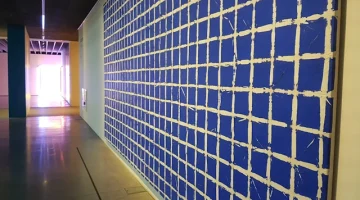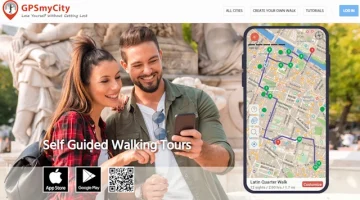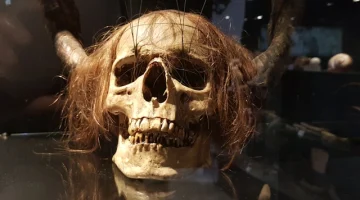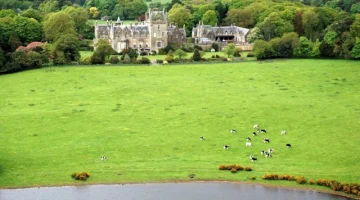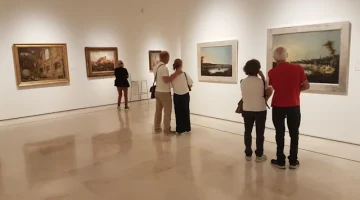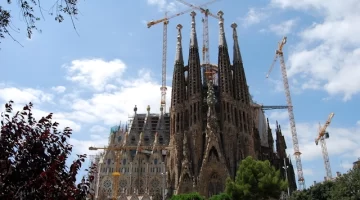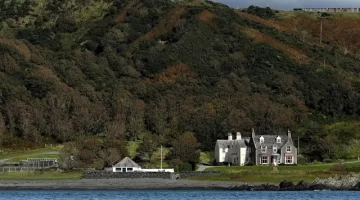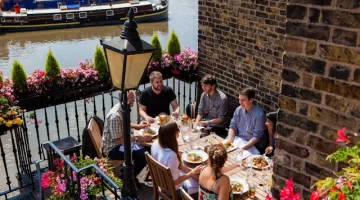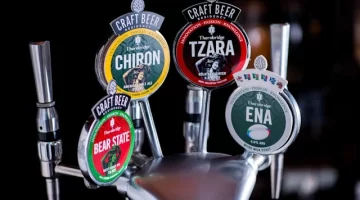Bordeaux’s Chartrons District
Bordeaux’s Chartrons District is north of the centre, where many of its wine merchants settled and where you’ll find the City of Wine, Bordeaux’s newest attraction.

The Golden Triangle may be where Bordeaux spent its money, but it was made in the Chartrons district to the north of the city centre. Like much of Bordeaux it was originally marshland (one reason the city has no Metro system is because of its boggy origins), first cleared by the Carthusian monks who settled here in the 14th century and gave the area its name.

Arrival of the Wine Merchants
This is where the wealthy wine merchants lived, settling here because it was then outside the city walls, allowing them to avoid paying city taxes, while the area also backed on to the River Garonne for easy transport. The wine families built themselves suitably impressive mansions, many with cellars where they could age the wine from their vineyards that surrounded the city.
The wine trade is no longer here, but many of the mansions remain, some in private hands, some converted into chic hotels and apartments, with antique shops and art galleries lining the streets. The Chartrons is a pleasant and quiet part of the city in which to wander or to be based, even though there’s nothing much to see other than the streets and buildings themselves.

Chartrons Architecture
The architecture of Chartrons reflects its history as a commercial hub. Many of the buildings are elegant and grand, showcasing the wealth and prosperity of the wine merchants who once operated there. Today, these buildings often house galleries, boutiques, cafes, and wine shops.
In recent years, Chartrons has undergone redevelopment efforts aimed at preserving its historical charm while also modernizing infrastructure and amenities. This includes the renovation of old warehouses into contemporary spaces for shops, restaurants, and cultural events.

Quais des Chartrons
Along the Garonne River, the Quais des Chartrons offers picturesque views and a pleasant promenade for walking or cycling. This area has been revitalized, with parks, gardens, and recreational spaces for residents and visitors to enjoy.
Esplanade des Quinconces
Acting as a buffer between it and the city centre is the vast esplanade des Quinconces. It was built at the start of the 19th century on the site of a military fortress, and is yet another claimant to being Europe’s largest public square.

At one end the Girondins monument, erected in the late 19th century, symbolises the First Republic with its soaring column, elaborate statues and fountains. Between here and the river, the huge esplanade is a focus for concerts, exhibitions and, every other year (in even years) the huge 4-day Bordeaux Wine Festival.

The City of Wine
Bordeaux’s newest attraction is at the northern end of the Chartrons district and is by the river. La Cité du Vin is an obvious attraction for Bordeaux: a museum devoted to wine. See the museum’s excellent website for opening hours and prices. It also explains how to get there on the tram, by bike, by driving or even coming on the river. However you choose to get there, you simply cannot miss it as the huge shimmering golden metal building is designed to look like wine swirling in a glass.

You can visit much of the ground floor for free but the museum itself is a self-guided tour using an audioguide in several languages. It’s a modern, interactive museum which is very like wine itself – there’s a lot of history there but also a lot of fun! It naturally has a wine bar and your admission price includes a glass of wine at the end: The City of Wine.

Museum of Wine and Trade
On the way to The City of Wine you could go by The Museum of Wine and Trade, which is more what you expect from a wine museum. There are lots of historical artefacts and it looks rather old-fashioned compared to the ultra-modern City of Wine, but still worth a look for those who are interested in the wine business.
This article is also featured on GPSmyCity. To download this article for offline reading or create a self-guided walking tour to visit the attractions highlighted in this article, go to Walking Tours and Articles in Bordeaux.
BEST BORDEAUX GUIDE
Here’s our pick of the travel guides to Bordeaux, the pocket-sized guide from Lonely Planet. It’s got 91% 4-star and 5-star reviews on Amazon. Here’s what one reviewer said: ‘Just came back from Bordeaux and used this guide every day. it’s very good and despite it’s size, it is very informative and I highly recommend it.’
Click on the cover to read more on Amazon.

